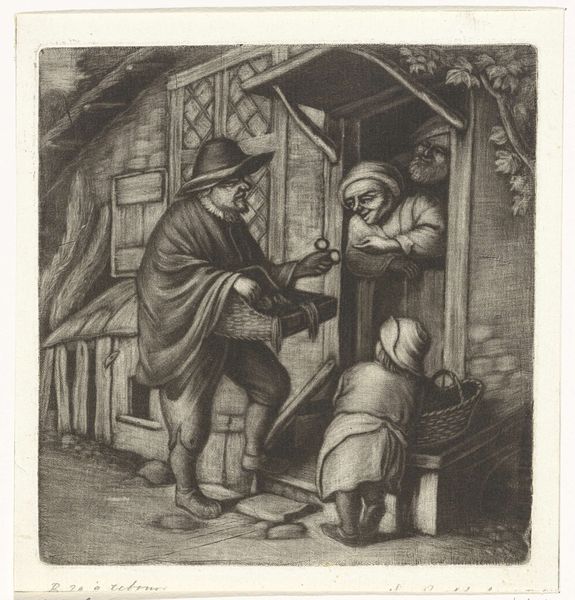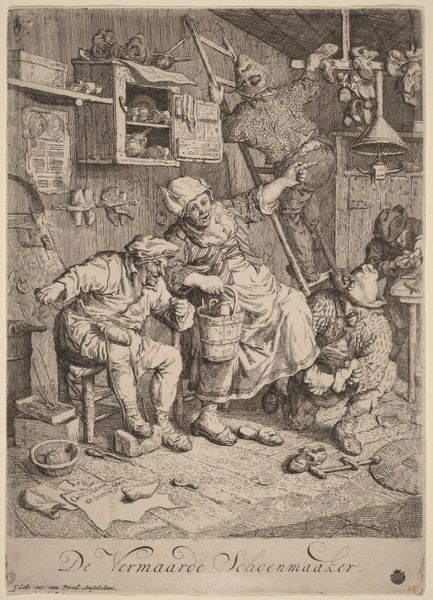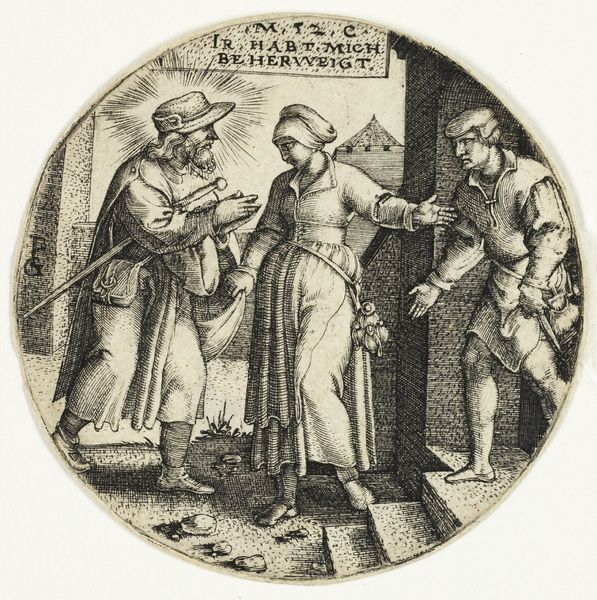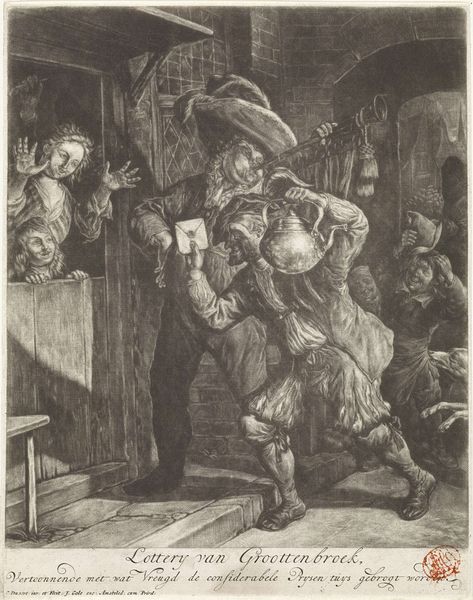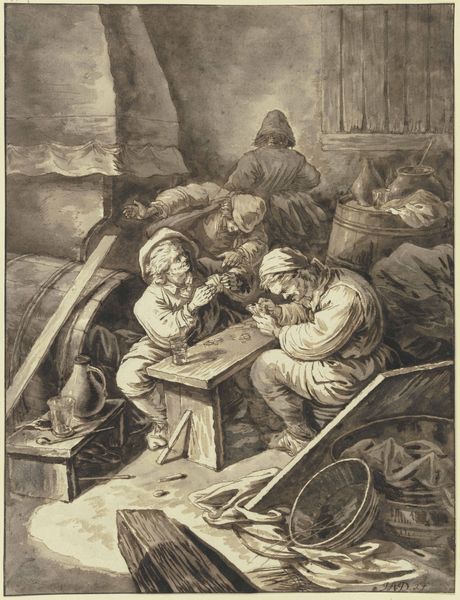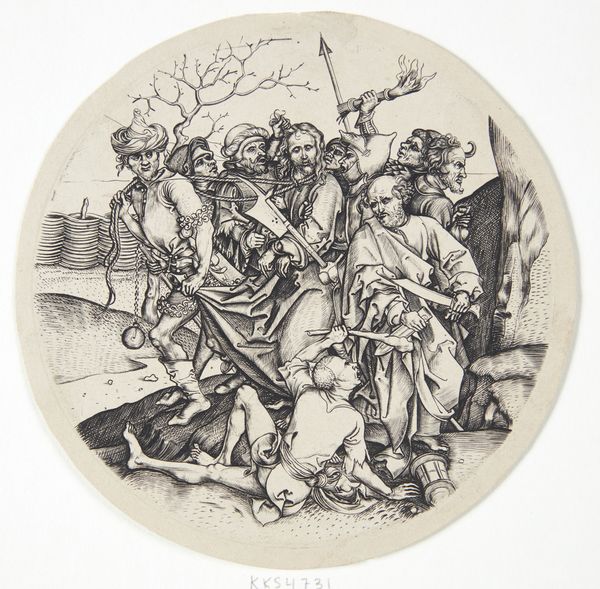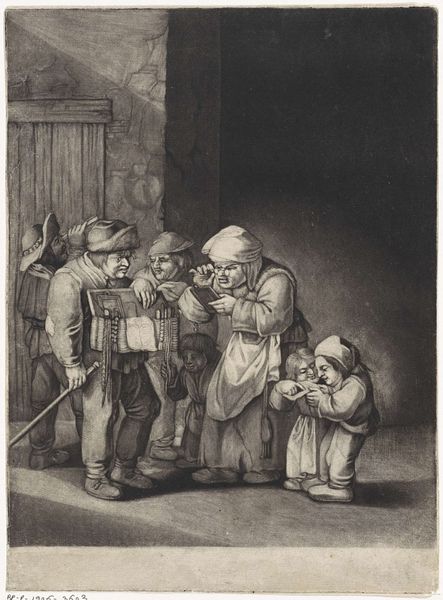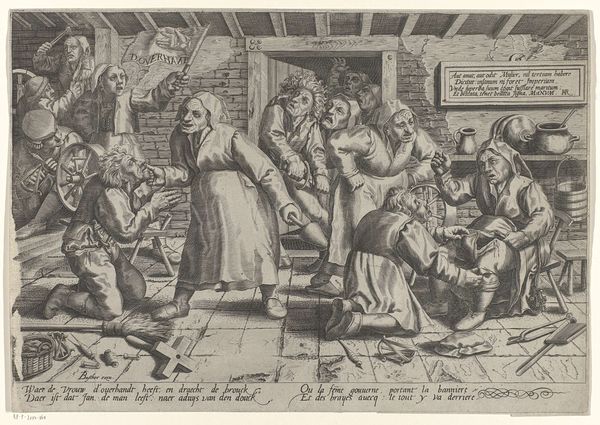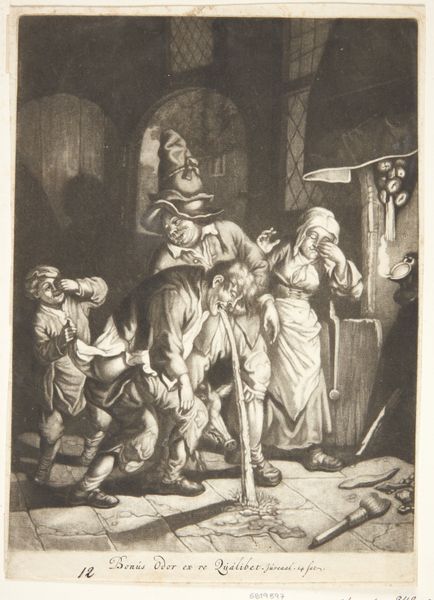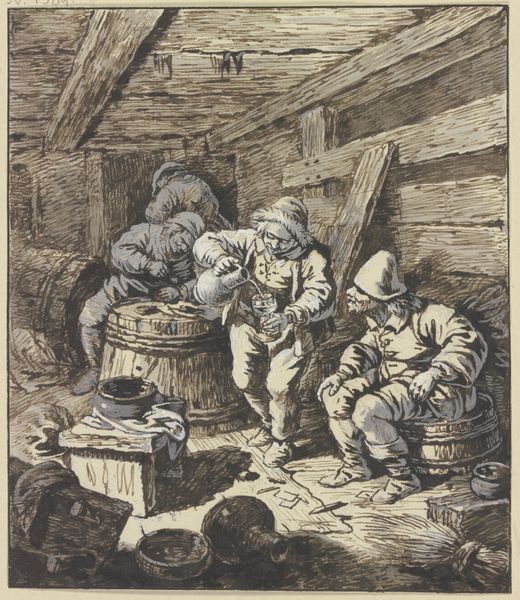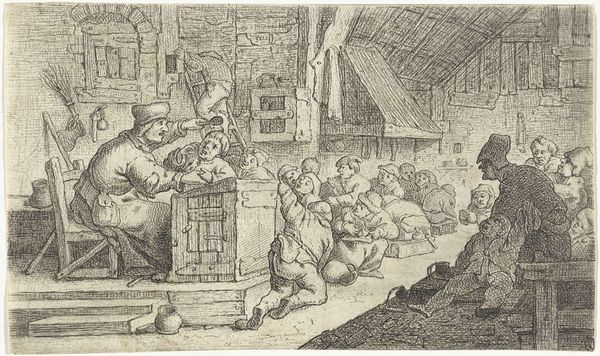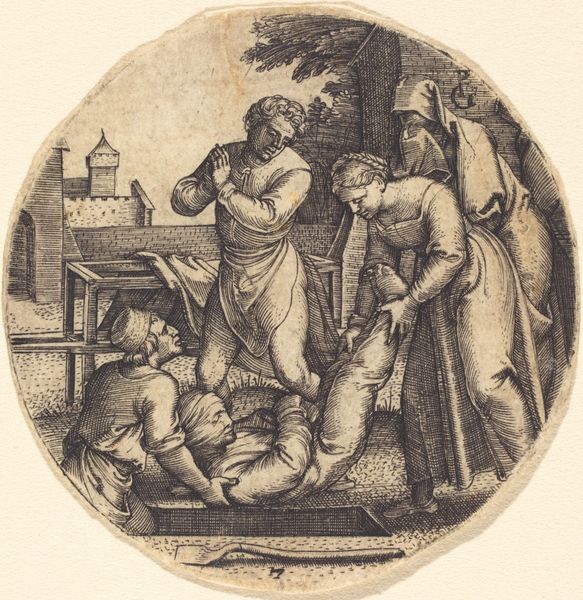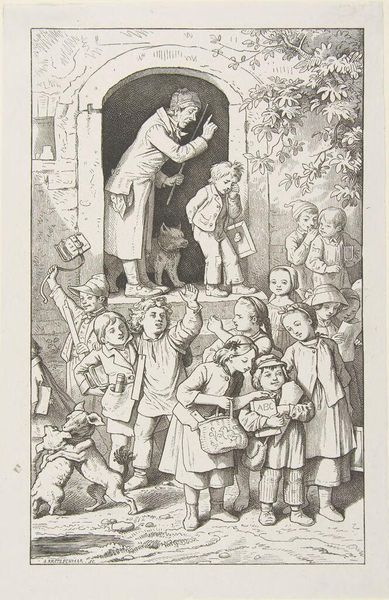
painting, oil-paint
#
narrative-art
#
baroque
#
painting
#
oil-paint
#
figuration
#
oil painting
#
flemish
#
genre-painting
#
portrait art
Copyright: Public domain
Curator: Pieter Brueghel the Younger, following in his father's footsteps, painted "The Drunkard Pushed into the Pigsty" in 1616, rendered with oils. The circular composition gives it a focused intimacy. Editor: Intimacy is one word for it! I'm struck by the visceral nature of it all. The colour palette of browns, ochres, and muddied greens certainly doesn't sugarcoat the reality depicted here. What's your first reaction? Curator: From a formal perspective, I notice how Brueghel directs the eye through layered orthogonals created by the fence, leading back into the throng of horrified or perhaps amused faces, carefully composed with highlights on their grimaces to enhance perspective. Editor: Horror and amusement, you say, and how brilliantly captured are those fleeting expressions. But let's talk about the titular drunkard and the imagery surrounding him. Pigs were very potent symbols, weren't they, not only of baseness, and gluttony, but the general chaos unleashed through intemperance? Curator: Precisely, this links strongly to the subject of moral and physical squalor, reinforced by the limited depth of field which presses the viewer up close with the action, thus intensifying feelings of abjection or unease. Note the contrast between this compacted space compared against empty space above—this emphasizes visual tension. Editor: The details really solidify it, don't they? It isn't just some random mishap. Note the older woman yanking on the fellow's belt to accelerate his descent! To me, that reveals more about the broader symbolic context around community shame, ridicule, maybe even outright social control, which is expressed via everyday action and symbolism. Curator: Indeed, the gesture is telling—I agree with the shame analysis. One can easily apply Structuralist lens towards it. Note, for instance, how her tug can be decoded as a phallic symbol to reinforce dominance—the fall of the drunk signifies societal restoration… Editor: Very interesting reading, Curator. In seeing what Brueghel is illustrating here, I think we understand that sometimes community and its symbols function in peculiar ways to discipline deviant behaviours. Curator: Indeed. Brueghel the Younger gives us a stark reminder of human fallibility rendered in paint, skillfully structured into tightly compressed space to maximum emotive effects! Editor: This image makes a viewer ruminate on their own ideas around fault, human frailty, and the consequences we face in full view of society and self!
Comments
No comments
Be the first to comment and join the conversation on the ultimate creative platform.
